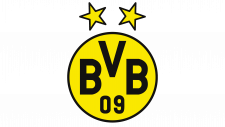Ajax Logo
AFC Ajax, the renowned football club from Amsterdam, operates as a publicly traded entity, meaning ownership is dispersed among numerous shareholders. The club’s rich legacy in Dutch and international football is fueled by a diverse ownership structure, with shareholders possessing varying degrees of stakes. Ajax’s operational and financial activities are overseen by its management and board of directors, aligning the club’s strategies with stakeholders’ interests. It stands as a symbol of excellence in the Eredivisie, reflecting its profound impact on the football landscape.
Meaning and history
AFC Ajax, originating from Amsterdam in 1900, is a storied football club with a history enriched with triumphs. Emerging as a dominant force in Dutch football, Ajax has clinched numerous Eredivisie titles, positioning itself as a powerhouse. The club’s philosophy focuses on cultivating talent within its acclaimed youth academy, De Toekomst, which has produced football legends such as Johan Cruyff.
Ajax’s journey is marked by victories in prestigious tournaments, including multiple UEFA Champions League trophies. The club’s hallmark playing style, Total Football, emphasizes fluidity and player interchangeability, revolutionizing football tactics. Ajax’s influence extends globally, impacting football perspectives and methodologies worldwide.
The club’s resilience has been tested over the years, facing financial constraints and competitive challenges but Ajax has consistently rebounded, retaining its esteemed status in international football. The club’s narrative is a testament to its enduring commitment to excellence and innovation in football, underscoring its illustrious legacy in the sport.
1900 – 1911
Established in 1900, Amsterdamsche Football Club Ajax manifested early on with its inaugural emblem, a rarity in early sports entities, as a plethora of teams initially opted to forgo graphic representations. The emblem’s conceptual essence was clear-cut, portraying a player donned in a white kit marked with red stripes, complemented by black shorts. The presence of a black and white ball solidified the association with the sport of football. The figure was encapsulated within a luminous circle, encased in a red boundary featuring the inscription “AMST. FOOTBALL-CLUB AJAX.”
This distinctive, early adoption of a symbol emphasized Ajax’s commitment to forging a strong, identifiable brand from its inception, reflecting a sense of unity and pride. The detailed representation of the player symbolized the club’s foundational values, highlighting its focus on individual skill and sportsmanship. The encompassing red ring served not just as a decorative element but as a binding force, encapsulating the essence of the club and its steadfast spirit.
In an era when graphical insignias were not the norm, Ajax’s innovative approach set it apart, allowing it to build a substantial identity, subsequently contributing to its enduring legacy in the sporting world. The careful amalgamation of colors and elements within the logo represented a harmonious blend of tradition and ambition, marking Ajax’s journey through the annals of football history. The emblem became a visual narrative, telling the story of a club deeply rooted in its origins yet forward-looking in its vision, embodying the passion and resilience that have come to define Ajax over the years.
1911 – 1928
When the team clinched the Eerste Klasse title for the first time, ascending to the premier division, the logo underwent a transformation. This modification aimed to rejuvenate the gear, due to its resemblance to the kits of Dutch club Sparta Rotterdam, especially since there were no distinct attires for away fixtures during that era. Consequently, the emblem welcomed a refreshed AFC Ajax home uniform: white shorts paired with a similarly hued shirt, adorned with two red vertical stripes running down the back and the chest. Simultaneously, the shade of red embraced a slightly more vibrant hue.
This evolution in logo signified a period of growth and change for the team, marking its progression and success within the league. The distinction in kit and emblem was more than a visual alteration; it represented a shift in identity, reflecting the club’s evolving legacy and its rising prominence in the football domain. The brighter red underscored the vibrant energy and the unyielding passion that the team brought to the field, symbolizing their fervor and commitment.
This redefined emblem and kit, showcasing bolder and more distinctive elements, not only set Ajax apart from its contemporaries but also enriched its heritage, intertwining its victories and evolving traditions into a visual narrative that continues to represent the dynamic spirit and enduring resilience of the club in the ever-evolving world of football.
1928 – 1991
In 1928, the proprietors of the squad opted to intertwine the emblem directly with the name, leading to a refined artistic representation. Consequently, they illustrated an ancient Greek warrior, Ajax, rendered in profile within the emblem. His headgear was adorned with portrayals of other beings from mythology – the centaurs. To the left, the word “AJAX” was inscribed, while the right featured a square shield with a rounded base, bisected by a black diagonal stripe.
The shield’s upper segment was depicted in red, and the lower one in white. All these components were encased within a twin ring. In terms of form, hue, and overall arrangement, this emblem bore a resemblance to the design found on the club’s commemorative porcelain plate, unveiled in 1925.
This illustrative transformation served as a symbol of rich heritage, linking the club’s identity to revered mythical elements, thereby deepening its symbolic resonance. The incorporation of ancient figures served as a visual narrative, amalgamating historical richness with the evolving spirit of the team. The emblem, nuanced with mythological and heraldic elements, rendered a layered complexity, reflecting not just the name, but also embedding a storied essence within its visual representation. This enriched symbolism marked a pivotal phase, enhancing the club’s visual identity with a multifaceted aesthetic, mirroring its diverse and layered journey in the sporting arena.
1991 – Today
The emblem instituted in 1928 endured for six decades, however, its intricate detailing rendered it less suitable for commercial utilization. Consequently, in 1990, creatives embarked on reimagining the Ajax representation into an abstract and minimalist avatar, stripping away the superfluous elements. The shield and the black encompassing ring were eradicated, supplanted by innovative framing constituted of red arching lines along with the inscriptions “AJAX,” “AMSTERDAM.”
This transformation aimed at enhancing commercial adaptability, focusing on sleekness and modern appeal, conveying the essence with reduced intricacy. The conceptual redesign aspired to uphold the emblematic essence while ensuring optimum visual impact and adaptability across varied commercial platforms. The streamlined modernity encapsulated the club’s evolution, aligning its visual identity with contemporary aesthetic preferences, ensuring a seamless amalgamation of heritage and modernity. The refined simplicity accentuated the emblem’s adaptability, paving the way for a harmonious blend of tradition and contemporary design principles, facilitating broader commercial incorporations.















